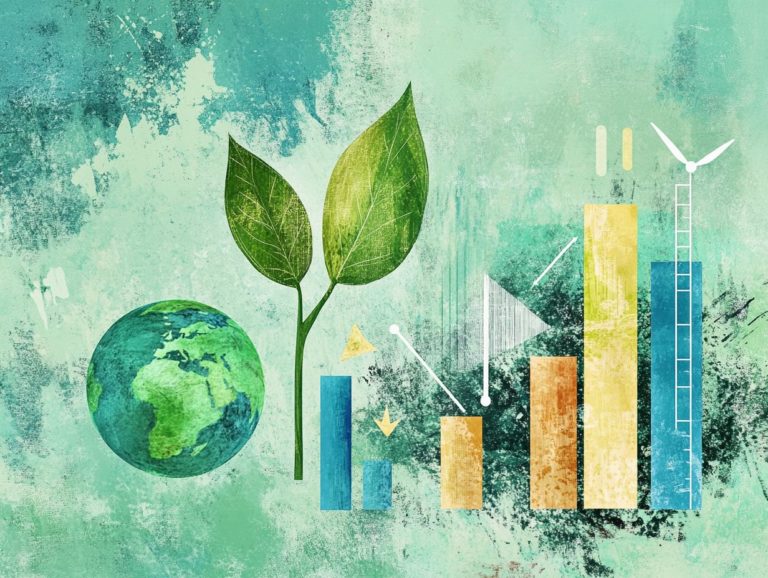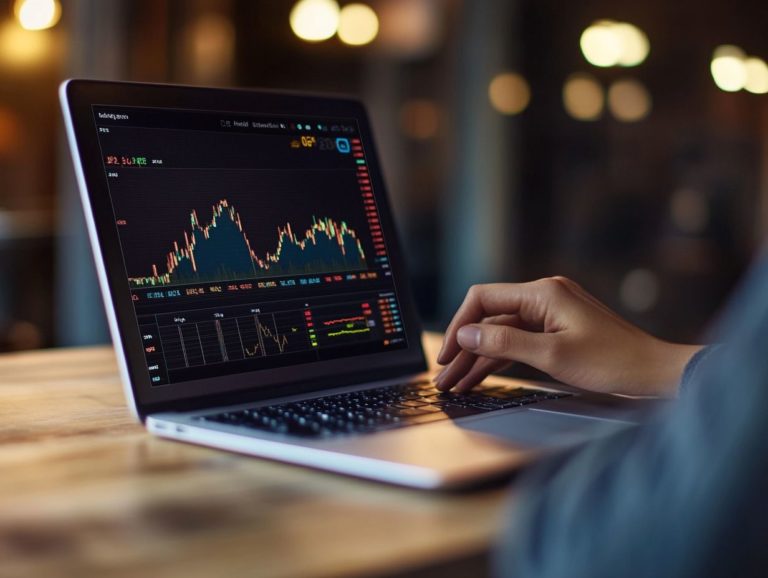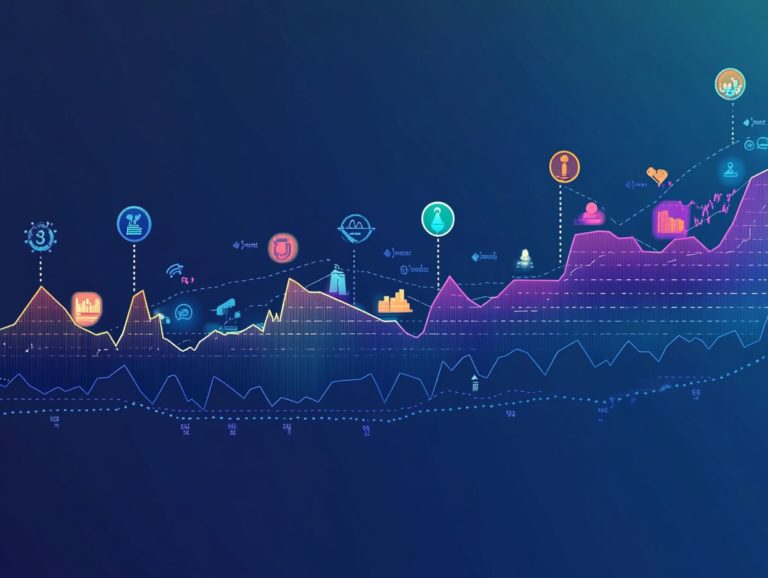5 Trends in Market Volatility to Be Aware Of
In today’s fast-paced financial landscape, grasping market volatility is essential for you as an investor. Get ready to explore five key trends that can shake up the market! Learn how to stay ahead of the curve.
Various factors, from global events to technological advancements, shape the markets, making it vital for you to stay informed. This article delves into five key trends that influence market volatility, including the effects of social media and political uncertainty.
You ll gain insights on how to navigate these fluctuations, prepare for potential risks, and leverage diversification strategies to protect your investments. Dive in now and equip yourself with the insights to thrive during market turbulence.
Contents
- Key Takeaways:
- 1. Increase in Frequency of Market Volatility
- 2. Impact of Global Events on Market Volatility
- 3. Role of Technology in Market Volatility
- 4. Influence of Social Media on Market Volatility
- 5. Effects of Political Uncertainty on Market Volatility
- How to Navigate Market Volatility in Your Investments?
- What Are the Common Causes of Market Volatility?
- How Can Investors Prepare for Market Volatility?
- What Are the Risks of Investing During Times of Market Volatility?
- How Can Diversification Help Mitigate the Effects of Market Volatility?
- What Are the Long-Term Effects of Market Volatility on Investments?
- Frequently Asked Questions
- What are the top 5 trends in market volatility to be aware of?
- How does increased global political and economic uncertainty affect market volatility?
- In what ways do new technology and better communication contribute to market volatility?
- How does shifting consumer behavior impact market volatility?
- How does the changing regulatory landscape influence market volatility?
- What role do natural disasters and climate change play in market volatility?
Key Takeaways:
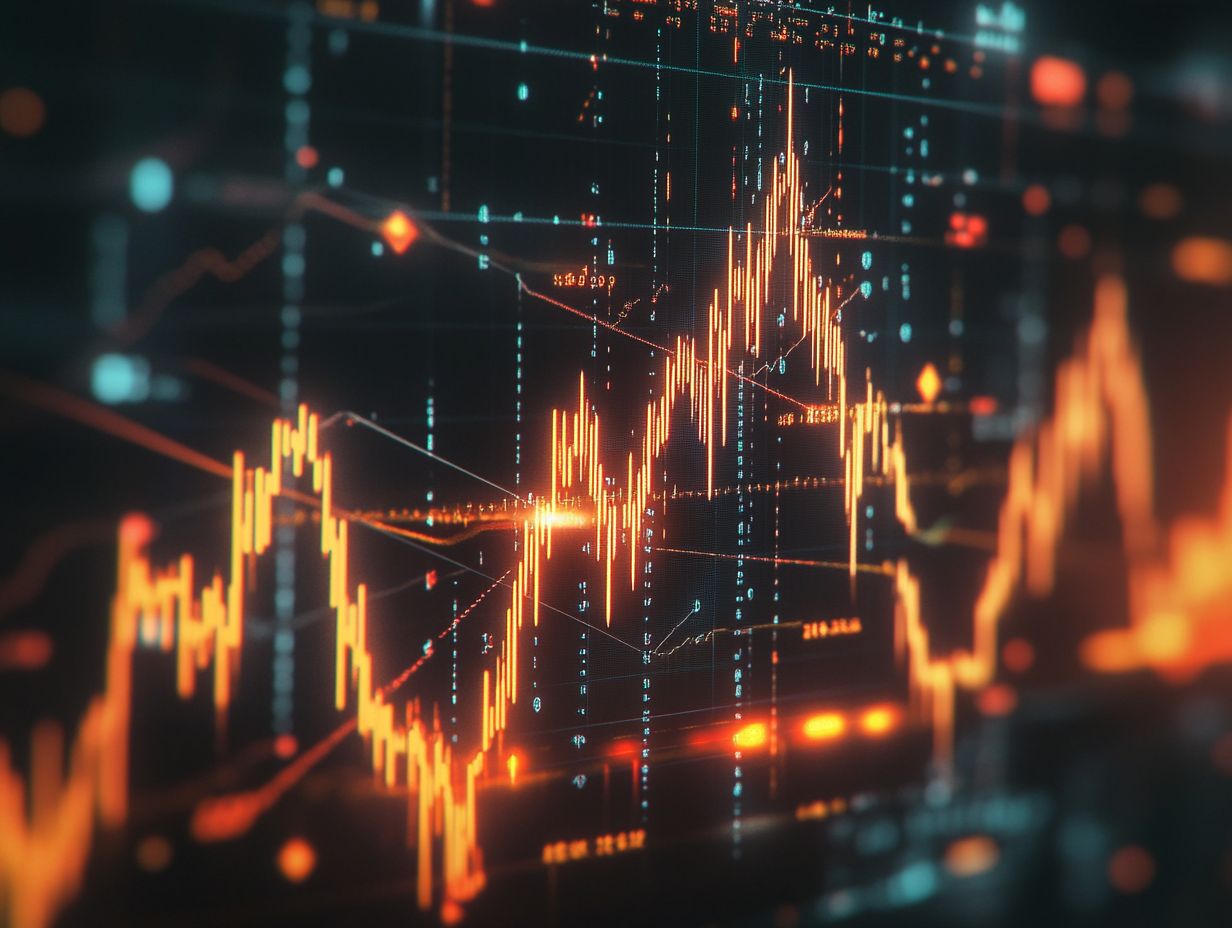
- Market volatility is occurring more frequently, making it important to stay informed and prepared.
- Global events, such as political and economic changes, have a significant impact on market volatility.
- Technology plays a major role in the speed and ease at which market volatility occurs.
1. Increase in Frequency of Market Volatility
In recent years, the rising frequency of market volatility has become a pressing concern for you and your fellow investors. Fluctuating interest rates, increasing inflation, and unpredictable economic conditions create an environment that demands enhanced financial education.
Robust risk management strategies are crucial for effective navigation. These challenges unveil opportunities for both retail and institutional investors like you, who are recalibrating their strategies to maintain resilience.
For example, this volatility often drives a reevaluation of asset allocations, highlighting the crucial role of portfolio rebalancing to keep pace with shifting market dynamics. Understanding cash exposure adjustments helps shield you from unexpected market changes. This knowledge allows you to keep your liquidity intact when needed.
As the landscape grows more intricate, those who prioritize education on market trends and risk management find themselves poised to make informed decisions, ultimately protecting and even enhancing their investment outcomes.
2. Impact of Global Events on Market Volatility
Global events, such as geopolitical instability, trade tariffs, and conflicts like those between Ukraine and Russia, profoundly influence market volatility, shaping your investment strategies and altering conditions worldwide.
Take the ongoing U.S.-China trade relations, for example. Tariff disputes not only escalate tensions but also inject uncertainty into global supply chains, affecting your decisions as an investor. You often find yourself in a delicate position, responding to the ebb and flow of news cycles and policy shifts.
Geopolitical crises, such as tensions surrounding Ukraine, can trigger immediate changes in market sentiment, leading to dramatic fluctuations in stock prices. The cumulative effects of these events naturally instill a sense of caution in you, influencing your investment choices and impacting broader economic recovery trajectories.
Given the interconnectedness of global markets, these incidents can create ripples through economies, affecting everything from consumer confidence to investments in emerging sectors.
3. Role of Technology in Market Volatility
The impact of technology on market volatility has become increasingly profound. As advancements in computer-based trading and the swift spread of market information evolve, they transform investment products and strategies, ultimately influencing overall market sentiment.
In this new landscape, trades can be executed in mere milliseconds, fundamentally altering the dynamics of buying and selling. You find yourself relying heavily on real-time data analytics to make informed decisions, which can lead to swift changes in market conditions.
Automated trading systems often set off a whirlwind of activity based on preset criteria, sometimes amplifying price fluctuations. As individual investors gain access to sophisticated tools once reserved for institutional players, the interplay between human behavior and technology continues to redefine economic conditions.
Trends like high-frequency trading illustrate how rapid information flows can result in unintended consequences, frequently resulting in heightened volatility and unpredictability within financial markets.
4. Influence of Social Media on Market Volatility

Social media has emerged as a powerful force influencing market volatility. Platforms enable the swift spread of information and opinions, swaying market sentiment.
This dynamic change means that a single tweet or viral post can set off a chain reaction in stock prices. Navigating this landscape filled with heightened uncertainty is crucial. For example, when prominent figures express their views on stocks like Tesla or GameStop, the resulting excitement can lead to substantial market pullbacks or surges.
Wealth managers must monitor social media trends to adjust their investment strategies for abrupt fluctuations. Grasping the connection between online sentiment and market reactions is now essential for making informed decisions in today s rapidly evolving financial environment.
5. Effects of Political Uncertainty on Market Volatility
Political uncertainty plays a significant role in market volatility. Shifts in government policies can lead to changes in interest rates, impacting economic recovery and reshaping the landscape for money-related actions and credit risk assessments.
Consider how significant changes in leadership or unexpected policy announcements often elicit immediate responses from the markets. This reaction reflects the anxiety of investors who are acutely attuned to governmental decisions. During election seasons or major legislative shifts, the unpredictability can drive trading volumes and influence asset prices. You need to stay alert every second counts!
Understanding how political events have historically influenced economic indicators can enable you to develop informed strategies. By employing diversified portfolios and hedging techniques, you can effectively mitigate the risks associated with this volatility, positioning yourself for more stable returns even amid uncertainty.
Navigating market volatility in your investments requires a meticulously crafted strategy that emphasizes effective risk management, appropriate asset allocation, and a steadfast focus on long-term goals.
Start by regularly assessing your risk tolerance and adjusting your portfolio as needed. Diversifying your investments across different asset classes is key to success! Conduct periodic rebalancing to maintain an optimal risk-return profile. Consider employing strategies like stop-loss orders to provide an additional layer of protection during downturns.
Remember, aligning your investment choices with your individual long-term goals will help you minimize impulsive decisions driven by short-term market movements.
By cultivating a disciplined approach to investing, you can better manage the inevitable ebbs and flows of the market.
What Are the Common Causes of Market Volatility?
Market volatility often stems from a combination of familiar triggers, including shifts in economic conditions, changes in interest rates, inflationary pressures, and geopolitical instability. To stay informed, it’s important to keep an eye on the top stock market trends to watch this year, as each of these factors can significantly influence financial markets.
These elements frequently interact in ways that can amplify market fluctuations. For example, when economic growth begins to wane, you might find investors fearing diminished corporate earnings, leading to a flurry of stock sell-offs.
If central banks raise interest rates to combat rising inflation, you ll see borrowing costs rise, further stifling consumer spending and business investment.
A major point is the heightened volatility observed during the pandemic. Here, supply chain disruptions sparked inflation fears, while government policies introduced uncertainty. For more insights, the top 10 market trends influencing investments today highlight how these dynamics create an environment where sudden market changes seem to become almost routine.
How Can Investors Prepare for Market Volatility?

To prepare effectively for market volatility, prioritize risk management and boost your financial education. Adopt flexible investment strategies that adapt to changing economic conditions.
This proactive approach enables you to navigate unpredictable market situations with greater ease. Stay informed about market trends and economic indicators through tools like financial news apps, market analysis websites, and online courses focused on investment principles.
Diversifying your portfolio reduces risks, ensuring that your investments aren’t overly concentrated in one area. Engaging with financial advisors or investment forums provides valuable insights and support, equipping you with the knowledge needed to make sound decisions during turbulent times.
What Are the Risks of Investing During Times of Market Volatility?
Investing during market volatility carries several risks, including heightened credit risk, potential losses in asset allocation, and navigating complex investment options during turbulent financial markets.
These risks can lead to significant fluctuations in the values of your stocks, bonds, and alternative investments, often catching you off guard. For example, you might see dramatic price swings in equities, while fixed-income securities could falter due to rising interest rates. Commodities can also be affected by geopolitical tensions and economic uncertainties, adding another layer of complexity to the investment landscape.
You can reduce these risks by utilizing well-informed strategies. Conduct thorough research and analyze market conditions carefully. Diversifying your asset classes acts as a buffer against volatility, helping you maintain a more balanced portfolio that withstands market fluctuations.
How Can Diversification Help Mitigate the Effects of Market Volatility?
Diversification is a cornerstone strategy for mitigating market volatility. By spreading your investments across various asset classes, you can reduce risk and enhance your portfolio’s overall stability.
This approach means allocating funds not just in stocks but also in bonds, real estate, commodities, and even international markets. This creates a valuable buffer against potential losses. If the stock market takes a nosedive, your bond holdings might shine, helping offset some of those losses.
Diversification also includes sectors like technology, healthcare, and utilities. This ensures your portfolio isn t overly reliant on any single market movement. By understanding the correlation the relationship between different assets you can craft a resilient strategy against economic fluctuations, ultimately safeguarding your investments more effectively.
What Are the Long-Term Effects of Market Volatility on Investments?
Understanding the long-term effects of market volatility on your investments is crucial for aligning your strategies with your financial objectives. Prolonged volatility can reshape economic conditions and influence your future investment performance.
Be aware that fluctuations in market performance, driven by factors such as geopolitical events, economic indicators, and shifts in consumer behavior, can lead to significant changes in your portfolio’s value over time. Historical data shows that certain asset classes, like equities, often recover and yield positive returns in the long run, while others, such as bonds or commodities, may offer the stability you need during turbulent periods.
As you craft your financial plans, consider diversification as a powerful tool against volatility. This approach helps your investment strategy remain resilient against short-term disruptions, positioning you to achieve your long-term financial goals.
Frequently Asked Questions
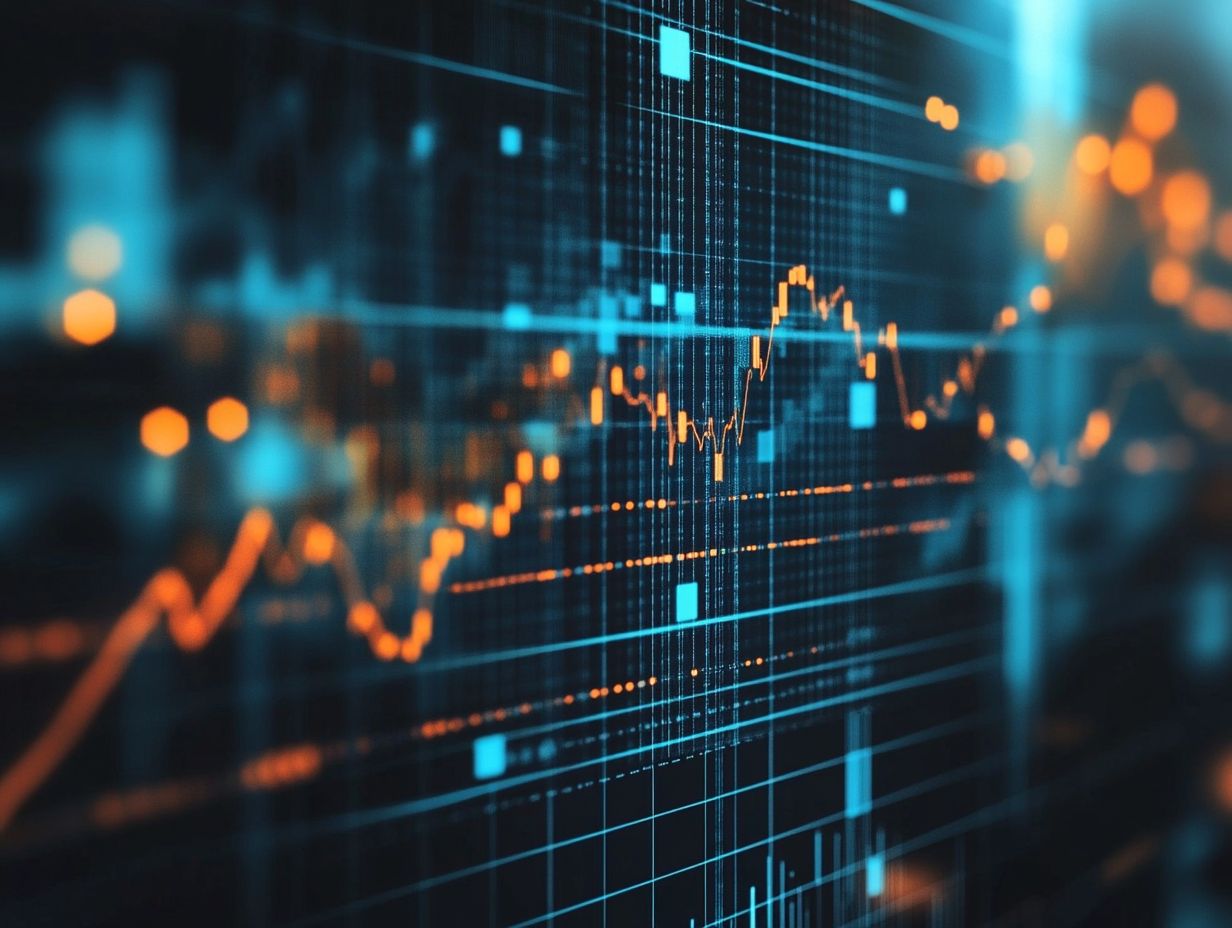
What are the top 5 trends in market volatility to be aware of?
The top 5 trends in market volatility include:
- Increased global political and economic uncertainty
- New technology and better communication
- Shifts in consumer behavior
- Changing regulations
- The impact of natural disasters and climate change
How does increased global political and economic uncertainty affect market volatility?
When global politics and economies are uncertain, investors get cautious, triggering market swings. This results in fluctuations in stock prices, currency values, and interest rates.
In what ways do new technology and better communication contribute to market volatility?
New technology makes it easier for information to spread quickly. This rapid sharing can lead to increased volatility as markets react to news and events almost instantly.
How does shifting consumer behavior impact market volatility?
Consumer behavior is changing. This shift can affect stock prices and overall market stability.
For example, a decline in consumer spending can cause an economic downturn and affect market performance.
How does the changing regulatory landscape influence market volatility?
New rules might shake up the market, making it crucial for investors to pay attention. Changes in regulations can create uncertainty and potential risks, resulting in price fluctuations.
What role do natural disasters and climate change play in market volatility?
Natural disasters and climate change significantly impact specific industries and companies. For instance, a major hurricane can disrupt supply chains and affect a company’s earnings, causing stock prices to fluctuate.


